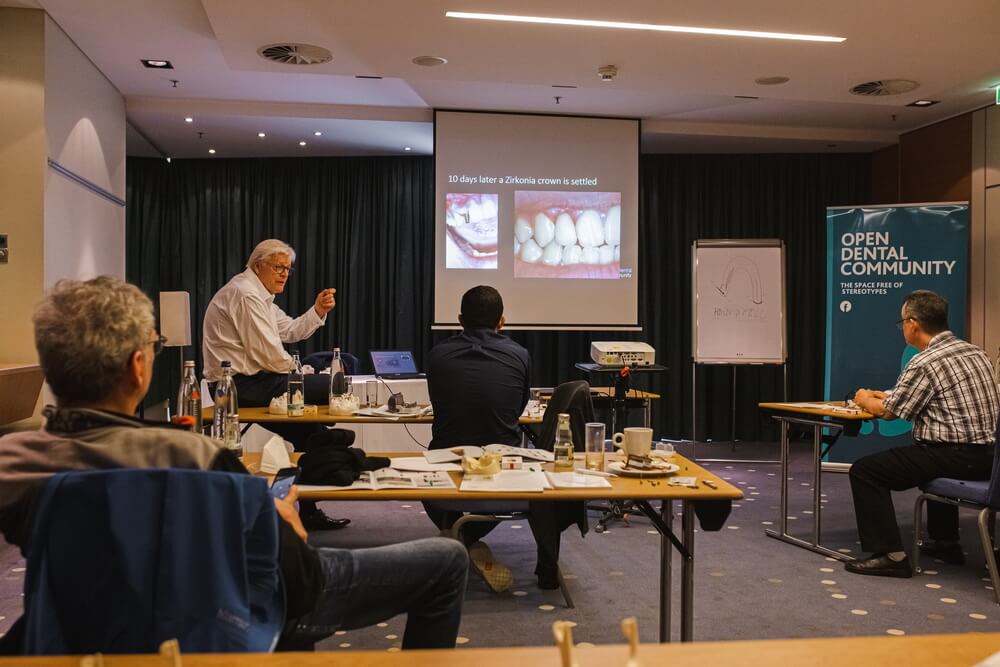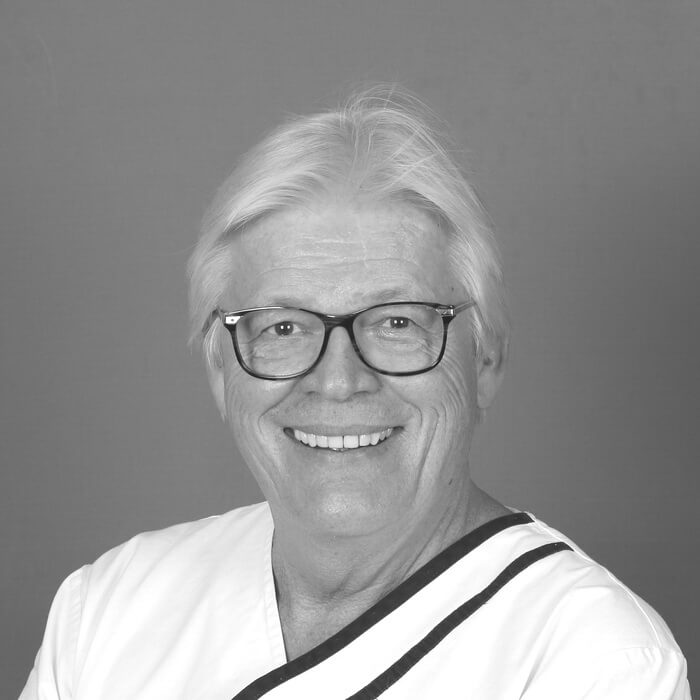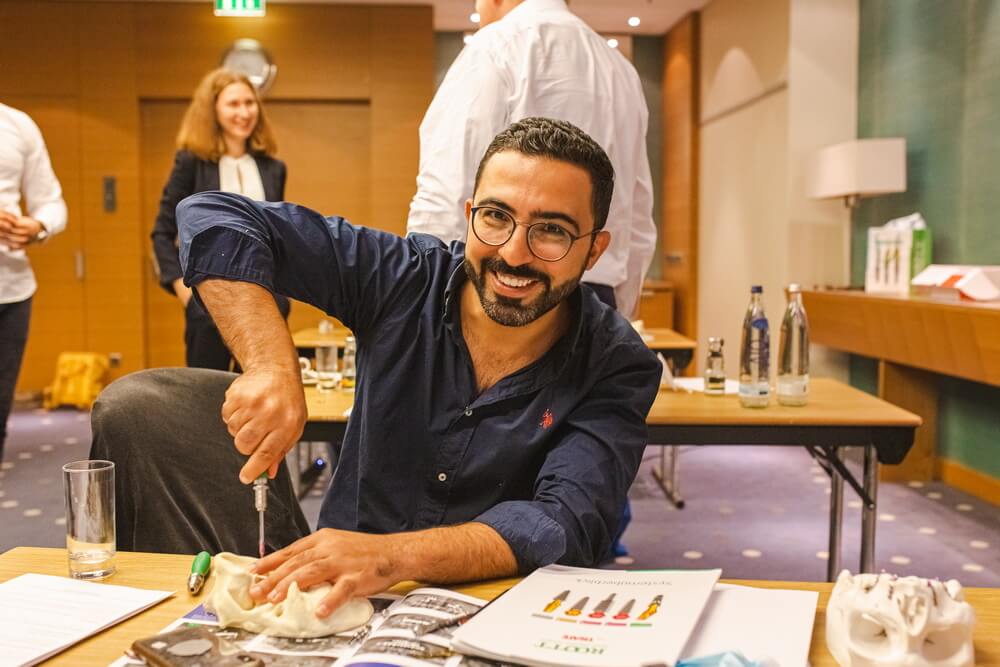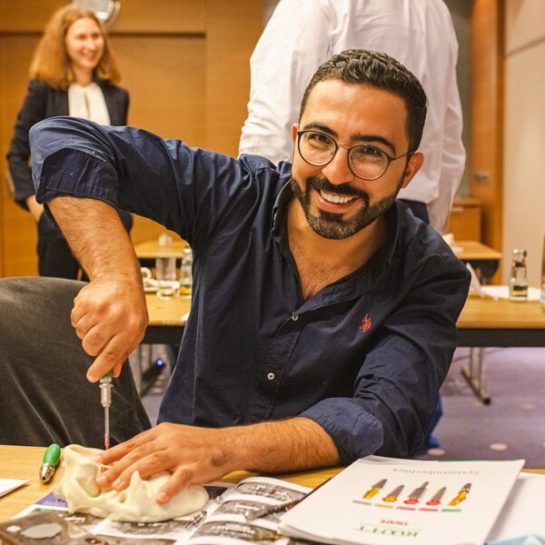
On August 21st training program called “Minimal invasive implantation without sinus lift and bone augmentation” where participants from Germany gathered to learn more about pterygoid implants and treatment options without sinus lift and bone augmentation, treatment options of atrophied bone, such as minimum width in the mandibular bone. Presented by Henri Diederich the president of the Open Dental Community, with extensive knowledge of the pterygoid region and implants. Certified implantologist with 30 years of experience was ready to teach the possibilities of pterygoid implants to participants who were new with ROOTT solutions and to those who were already familiar with ROOTT and wanted to extend their knowledge.
The problem of atrophied bone
The insufficient bone amount for implant anchoring is frequently caused by low bone quality in the posterior maxilla. Sinus lift and bone augmentation are often seen as a problem solution for the reabsorption of bone. Yet sinus lift surgery is especially difficult with prolonged healing of usually 6 months. Limited width of bone in the mandibular bone may also cause additional limitations for restorations which require more time and resources. Less invasive operations, time-saving options and patient-friendly rehabilitation can become aspects for which patients and specialists are looking. That is why education is needed to introduce specialists with the alternatives which are in the market at the moment.
A new approach to the maxilla rehabilitation
The pterygoid implant is an alternative to the zygomatic implants for posterior maxilla rehabilitation helping to preserve the sinus and avoid complications such as vestibular cortical fenestration, temporary sensory nerve deficits and injuries overall. Furthermore, pterygoid implants at the moment are changing the view of the posterior maxilla and allows implantologists to look for more comfortable solutions and approaches to rehabilitation of the maxilla.

In implantology we have two approaches: either adapting the bone to the existing implants or having implants adapted to the bone. ROOTT offers the second possibility, which is unique.
Dr. H. Diederich
Hands-on experience
What is the better way of teaching, than including both theoretical and practical knowledge into works?
During hands-on activities the participants had a chance to try out implants by themselves, to implement the theoretical knowledge into practice. During the training, participants learned how pterygoid implants were used in the dental cabinet, and how to safely insert the implant into the pterygoid region.
To add on, there were other solutions for atrophic bone rehabilitation presented, for participants to choose which type of implant and approaches are the most suitable ones. Since there are many ways of how to approach atrophic bone, many solutions were shown. One-piece implants with a narrow screw which are perfect for narrow ridge restorations and compressive wide screw implants for secure and durable fixation.

Post-training insights
After training participants acknowledged that results after course exceeded their expectations and that they learnt more about practical solutions for bone atrophy. Less time is required for rehabilitation, effective results and increased patient comfort were the benefits that were presented during training. After the presentation of clinical cases, participants were super excited to try out the implants on the jaw models. Dr Henri Diederich was able not only to teach participants theories and implementations but also was great at providing useful and practical information for future works.
Missed out on the event? Let’s meet at the upcoming event with professional Dr Diederich in Cologne.

